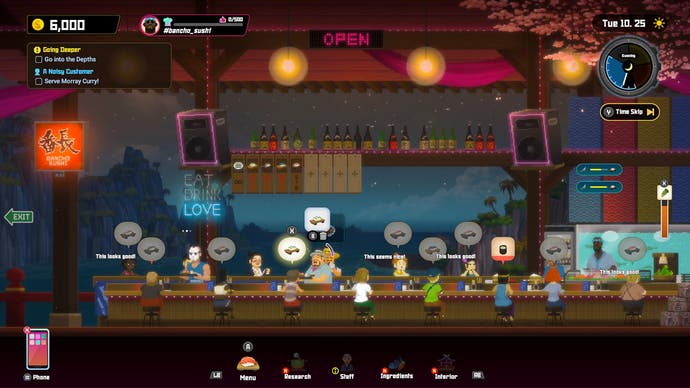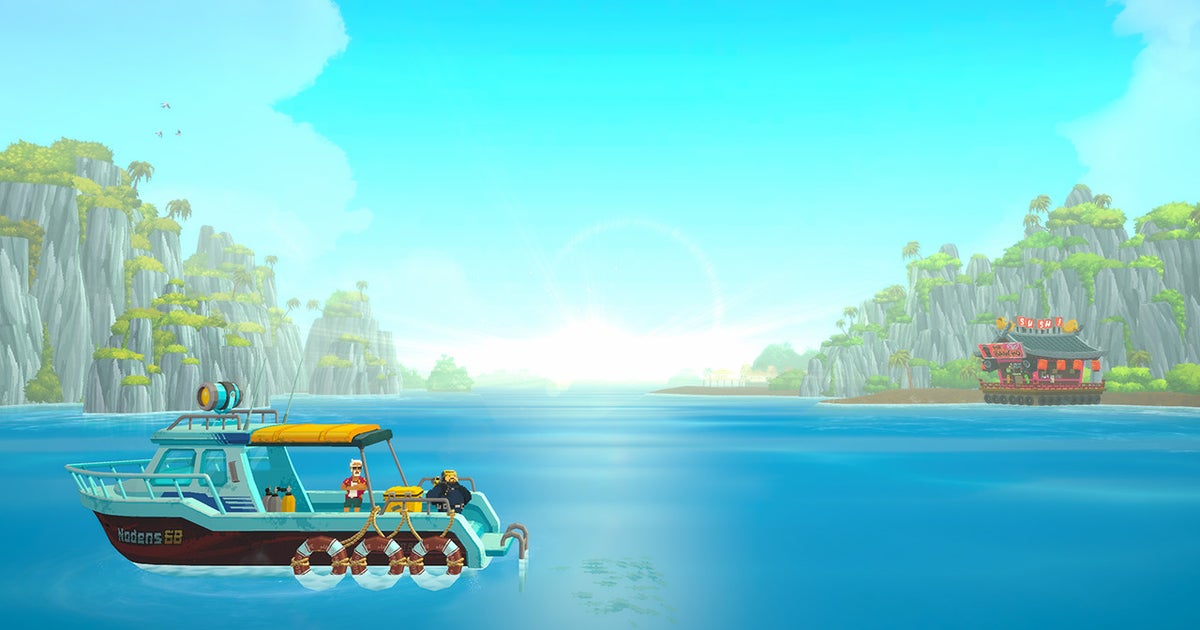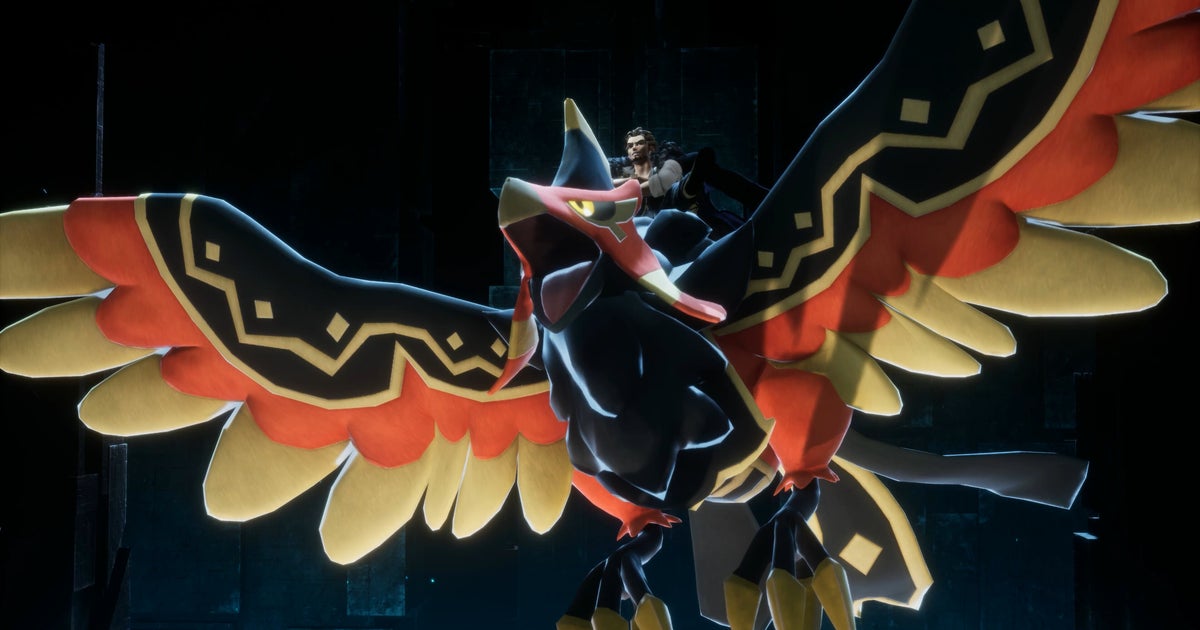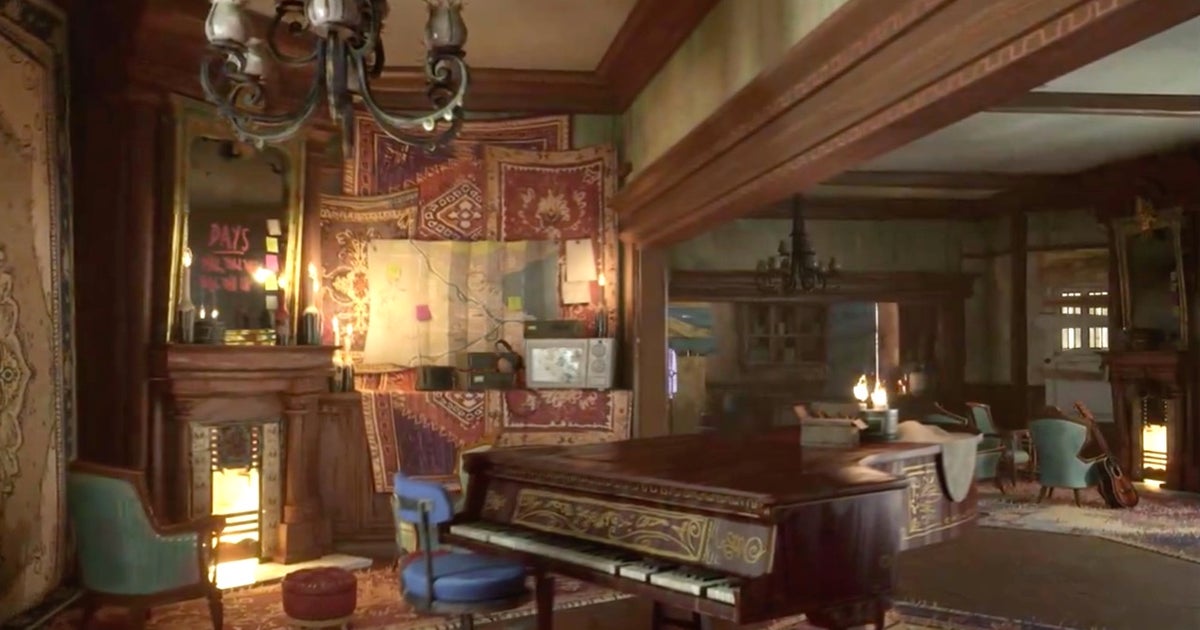Dave the Diver is an ingenious game about underwater exploration and working in a sushi restaurant. We plan on having a review out in the next few weeks, but before then, Matt and I had a quick chat about what makes this game so charming and special.
Chris: Matt! It’s lovely to chat to you. We’ve both been playing this game called Dave the Diver over the last few weeks. I get the impression you’ve made a lot more progress than me, but we both seem to be won over by it.
It’s one of those games that’s always evolving, but at the moment – I’m a few hours in – it’s really a game of two parts. During the day you go diving for fish and at night you help serve the fish in a sushi restaurant. So it’s two different kinds of games, the first being this roguelike where you explore this ever-changing lagoon and the second being almost a rhythm-action affair where you try to get the right order to the right customer as quickly as possible. That’s very bare bones, but that’s where I’m at. Tell me: what do you make of it so far?
Matt: Hello! I think that is both an entirely accurate and hilariously inadequate description of Dave the Diver; you’re absolutely right that those two parts are the foundation of a very wonderful experience, but it’s been a long time since I’ve been so consistently amazed and delighted by a game’s utter refusal to stick to the script. I think I’m probably a good few hours ahead of you by now, and already Dave the Diver’s careened into the realm of farming sim, briefly gone full-on visual novel, and even shoved an honest-to-goodness rhythm-action musical number in there for good measure. It really is a constantly surprising little gem, but I think its real trick, the thing that stops the whole thing from disintegrating in an explosion of whimsy, is that the diving bit is great.
Chris: It’s so good isn’t it? From the woosh when you arrive underwater to that sense of panic when things go wrong. For me, I’m always panicked that I’m not doing enough. These diving sections give you such a lot of different things to focus on. They’re little procedural dungeons, really? And you head in and you’ve generally got a shopping list of things to do: quest items to collect, fish to catch for the restaurant. But then there are weapons crates which might net you a better gun, things you can sell for cash, all kinds of resources. There are so many systems to think about but they all make sense: you need to upgrade gear to dive deeper, and you need to upgrade your oxygen, which basically doubles as health underwater. And you need to upgrade what you can carry. I’ve been in a couple of situations where I had a great haul of stuff, but I was carrying too much to get to the surface. Have you managed to get to a point where you feel like you’re in control down there?
Matt: I think I’ve probably reached a point now where I’m familiar enough with its basic rhythms of underwater exploration that I generally feel confident I’ll be able to get at least some of that ever-expanding shopping list done, but what I love about Dave the Diver is that, even as you get to know it more, and even if you’ve spend time investing in all those lovely upgrades, that underlying tension never goes away. As you alluded to, everything you do down there is tied to your oxygen and it’s such a canny bit of design; just swimming around uses oxygen, if you want to go faster it uses more, and when enemies land an attack, yes, it goes down too – and, of course, once it’s gone, so are you.
The way it’s all interconnected means things can go south amazingly fast, and with oxygen refills just scarce enough that you’re never quite sure when salvation will come, you’re kept in a perpetual state of steadily mounting panic as you weigh up the wisdom of pushing on. Honestly, even hours in, it’s rare for me to do a run that doesn’t end with a frantic, sweaty palmed dash to find an escape pod with my oxygen on its last remaining pixel. But then, it’s so hard to bring a dive to an end, especially when you know pushing ahead will probably reward you with another of David the Diver’s endless surprises – and then it’s all just so lovely down there! I still can’t get over the fact each of those pixel-y little fishes is secretly a lovingly crafted and animated 3D model. Do you find it as fascinating as I do how every now and then you get a whiff of VERY NOT INDIE BUDGET peering out from behind its indie facade?
Chris: YES! You said this to me, and I absolutely can’t get it out of my mind. It’s the most secretly lavish game of all time, right? Every system is beautifully crafted and delivered and pared back to its simplest version. And it just runs away in all these directions and seemingly has the time and the energy for everything. Even from where I am it’s like: let’s make the menu this incredibly detailed smartphone. Let’s have a green tea-pouring mini-game with playful particle physics! Every character has these little cut-scenes that introduce them or introduce an action and they’ll always be just completely nailed in terms of delivery. It’s published and perhaps made by Nexon, right, who are completely huge? I would love to know how this game came to be!
Matt: Yes, those cutscenes! All basically mini cinematic masterpieces in their own right! Oh, and I can’t believe we’ve gone this far without mentioning the sushi. It still slightly boggles my mind that what seems like every possible combination of ingredient you can find is accounted for with its own dish, and each of those gets a (I am more than willing to believe) culinarily accurate little pixel doodle and a lavish illustrated version used in the game’s Instagram-style photo app – itself yet another wonderful, if wholly unnecessary extravagance. I’m not a big fish eater, but good grief this game makes me hungry, and I do love that it feels like I’m being surreptitiously educated in the ancient art of sushi making and marine biology as I play.

Chris: Why do you think it all works? I’m fascinated by the fact that, at its simplest, this game jams two very different game styles together, and then only brings in more stuff. Yet it feels harmonious? I think a lot of it is to do with the way the characters glue everything together – you have these people with their own obsessions and purposes, and yet they all converge in the quests that the game steadily pays out to you? It reminds me in a weird way of the way that Civ games can be so incredibly complicated by just asking you a bunch of questions each turn: where do you want to move a unit? What do you want this city to make? What are you researching next? Through those simple choices you get a game with so much richness, and this is kind of the same thing? Run a restaurant, dive for ancient treasure, get better weapons and see all these different fish, and it’s all just done with a quest structure that stops you from getting too lost?
Matt: Why it works is a tough question! I guess you’ve got that lovely tension and release as you go from a day of beautiful, sort-of-serene, mostly stressful aquatic exploration to an evening of comparatively relaxed restaurant running, and it’s a balance that feels just right. But then it also takes that familiar roguelike loop of ‘get cool stuff to do more cool stuff to get more cool stuff’, and makes that cool stuff feel properly tangible, like it actually matters. You know, the sort of +1 on your squatting stat you might get in other games is nice and all, but here you catch a fish and it gets turned into a exquisite meal that delights a customer so much they want to take a photo of it and share it with the world – and that, like you say, feeds back into helping this lovable cast of idiots achieve their hopes and dreams. And, of course, the constant surprises, the unabashed warmth and silliness and absurd dramatics of it all probably go a long way too! I feel like there’s a Dave the Diver in us all, right?



